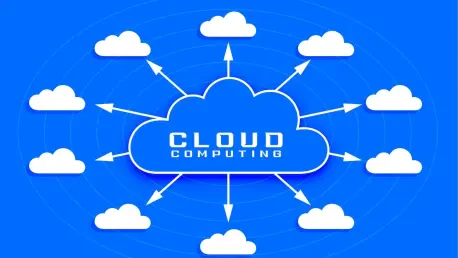Kendra Haines had the privilege of discussing exciting new developments with Anand Naidu, a renowned Development expert with extensive knowledge in frontend and backend development. As cloud computing continues to redefine data analytics, Snowflake’s latest innovation, Snowpark Connect for Apache Spark, aims to streamline the analytics process. Anand shared his insights on how this development could impact enterprise data workloads, cost efficiencies, and the broader landscape of cloud-based analytics.
What is Snowpark Connect for Apache Spark, and why is it significant?
Snowpark Connect for Apache Spark represents a significant step forward by enabling analytics workloads to be directly hosted on Snowflake’s infrastructure. This feature removes the need for enterprises to maintain separate Spark instances, reducing the overhead associated with managing disparate systems. By streamlining operations in this manner, significant efficiencies can be realized in terms of both time and cost.
How does Snowpark Connect promise to reduce latency and complexity for analytics workloads?
One of the core promises of Snowpark Connect is to bring analytics workloads to where the data is stored. Traditionally, moving large volumes of data between systems incurs not only time delays but also complexities in data management and orchestration. By eliminating these transfers, Snowpark Connect minimizes latency and simplifies the overall analytics workflow, allowing enterprises to focus more on deriving insights than on managing infrastructure.
Can you explain how the integration between Snowflake and Apache Spark is achieved with this new offering?
The integration is facilitated through Spark Connect, a feature introduced in Apache Spark 3.4. This functionality enables a clear segregation of application logic and processing, allowing the former to be defined in user environments like scripts or notebooks, and the latter to be handled by remote Spark clusters. This separation simplifies the integration process and efficiently handles workloads using Snowflake’s vectorized engine.
What is Spark Connect, and how does it relate to this new Snowflake capability?
Spark Connect allows the execution logic to be separated from the computation carried out on Spark clusters. With Snowpark Connect, Spark Connect’s capabilities are leveraged to ensure that Snowflake can efficiently execute Spark workloads within its Data Cloud. This means that users can continue using familiar Spark environments while benefiting from the scalable and efficient processing power of Snowflake’s engine.
How does Snowpark Connect enhance the performance of Apache Spark analytics workloads?
Snowpark Connect enhances performance by utilizing Snowflake’s vectorized engine which is optimized for such tasks. This vectorization improves execution efficiency and allows for faster processing of complex analytics queries. This is particularly beneficial for large-scale data operations where traditional Spark setups might struggle with performance bottlenecks.
What are the main advantages of running Spark code on Snowflake’s vectorized engine in Data Cloud?
Running Spark code on Snowflake’s engine not allows for more efficient execution due to the vectorized processing, but also complements Snowflake’s serverless model. Users benefit from reduced overheads since they no longer need to manage Spark clusters directly. The integration facilitates better scalability and resource allocation based on the fast-evolving demands of a modern analytics workload.
How does Snowpark Connect impact the total cost of ownership for enterprises using Apache Spark?
By leveraging a serverless architecture and integrating directly with Snowflake, enterprises can significantly lower their total cost of ownership. Much of the tuning and cluster management traditionally associated with Spark is offloaded, reducing both operational and infrastructure costs. Companies can then reallocate these saved resources towards more strategic initiatives.
In what ways does Snowpark Connect simplify infrastructure for organizations?
Snowpark Connect simplifies infrastructure by converging data and analytics within the Snowflake ecosystem. Without the need for external Spark instances, organizations can reduce the complexity of their architecture, ease their operational burdens, and minimize errors that might arise from managing multiple platforms.
How does the Snowpark Connect offering address the skills gap related to Spark expertise?
Finding and retaining Spark expertise can be challenging. By allowing developers to operate within the Snowflake environment, which is inherently more manageable and less resource-intensive than standalone Spark setups, the skills gap becomes less pronounced. Organizations can better leverage existing Snowflake prowess, decreasing the dependency on specialized Spark skills.
What is the difference between Snowpark Connect for Apache Spark and the existing Snowflake Connector for Spark?
The Snowflake Connector for Spark serves as a bridge, allowing seamless data transfer between Spark and Snowflake. In contrast, Snowpark Connect effectively relocates Spark’s processing capabilities into Snowflake’s environment. This reduces data movement, resulting in decreased latency and costs, and allows for a more integrated analytics approach.
How might moving from Snowflake Connector to Snowpark Connect benefit enterprises?
Transitioning to Snowpark Connect provides enterprises with a more cohesive and efficient platform for data analytics. They can capitalize on Snowflake’s robust performance and streamlined operations without needing to address the complexities and costs of data migration inherent with the traditional connector approach.
Are there any specific version requirements for using Snowpark Connect with Apache Spark?
Yes, Snowpark Connect is specifically designed to work with Apache Spark version 3.5 and above. This ensures compatibility with the latest enhancements in Spark and maximizes the potential benefits of integrating with Snowflake’s environment.
How does Snowflake’s new capability compare to similar offerings from competitors like Databricks?
While Databricks also offers integration capabilities with its own Databricks Connect, Snowflake distinguishes itself by focusing on leveraging its highly efficient vectorized engine and seamless integration within its existing Data Cloud framework. The choice may come down to the specific data strategy and infrastructure goals of the enterprise.
What potential challenges should enterprises be aware of when migrating from the Snowflake Connector to Snowpark Connect for Apache Spark?
enterprises might encounter minor challenges related to adapting to a new operational setup and ensuring all existing workflows are fully compatible. However, the migration itself is designed to be code-conversion free, meaning the transition should largely be smooth if the strategic planning has been effectively carried out.
How does this new capability align with trends in AI and ML adoption?
With AI and ML growing rapidly, having a highly efficient, scalable, and integrated analytics ecosystem is essential. Snowpark Connect aids in aligning data processing capabilities with modern AI and ML demands, providing enterprises with a robust platform that supports complex computations and enables faster insights, thus fostering innovation and agility.
Do you have any advice for our readers?
In navigating these advancements, it’s important to stay nimble and open to shifting your infrastructure strategy as technology evolves. As new capabilities like Snowpark Connect emerge, they offer the potential to redefine efficiency in data analytics. Embrace innovation, upskill the workforce to be fluent in these evolving environments, and leverage these tools to fuel your enterprise’s data-driven decisions.









